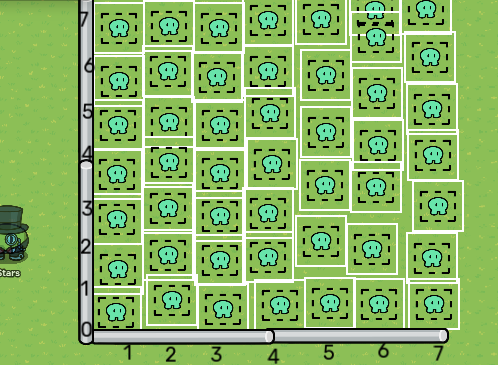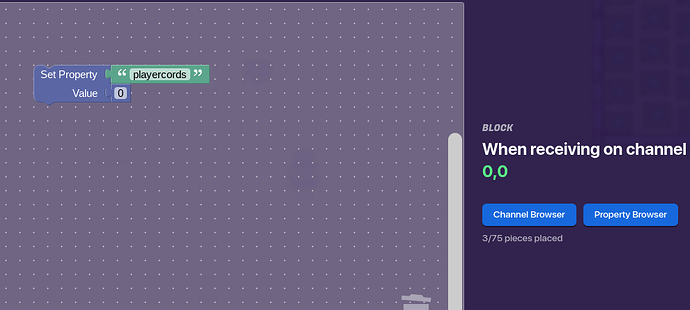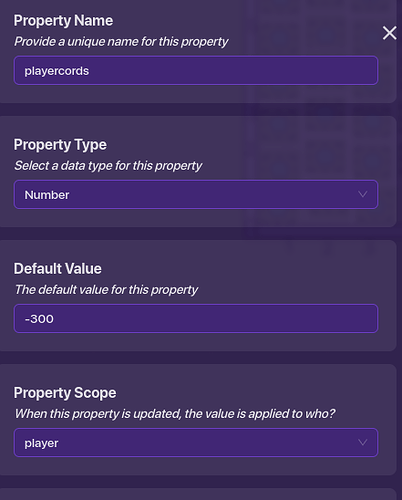This has been changed to a single details box because of the length it is.
Pseudo 3D (LENGTH WARNING)
Top - Down vs Platformer
So after taking a quick look at the video I think I have (some) idea of how to do this.
Assuming we’re using this in Top-Down because we cant go in every direction in platformer, I’ll completely base everything off of that.
Important Questions / Philosophies
- What will be the object that’s moving, how will we incorporate ray tracing into gimkit without using gimhook?
- Will we have enough memory to compensate for the probably 100’s of zones that’ll be needed to make a small sized map with raytracing?
- How will we make the equations needed with the limited amount of blockcode?
- 3D Ray Tracing is hypothetically possible on gimkit
The Coordinate System
The coordinate system will be relatively simple(ish).
Since this is a small scale example we’ll be using x1-7 and y1-7.

I know my coordinate system isn’t the best, but the point is the map is going to have to be a glorified coordinate system for this to work
Explaining The Math (Ew!)
Since we’re dealing with a block game, and the zones can only be so small we’ll be working in whole numbers only.
Like all coordinate planes, we’ll be using x,y in our equation. Easy Right? Nope!
Like we seen in the coordinate plane above, each zone will represent sets of coordinates… (0,0) (1,0) 0,1) and so on.
For each possible set of coordinates we’ll have a property that keeps track of the players current coordinates.
(Sort’ve) The Beginning To Everything
I know this may seem counterproductive, but we’re going to be using a text for the block code.
Oh well stars why cant we…
BECAUSE I SAID SO!!!
As seen here when the zone at coordinates ‘(0,0)’ transmits on 0,0 we’ll set the property of “PlayerCords” to 0. Seems simple right? No. This is just the beginning.
The Hard Part
The Hard part is the memory munching, property-tracking, system we’re going to have to make. For this we’ll actually use a trigger instead of a text because we won’t need to receive on multiple channels.
The default value will be -300 (because everything through -196 and 196 is taken)
The player scope HAS TO BE player for this to work.
Now when the property changes due to our text constantly receiving coordinates, we’ll transmit on “raytrace”.
The trigger we’ll be receiving on is going to constantly be under pressure to well, raytrace.

When we’re a 0,0 the pole will have a raytracing effect (it getting closer).
We can layer, lets say 10-15 poles each one getting larger or smaller, and only being shown when a specific set of cords are reached by the player.
Outro
I’m sorry this isn’t more in-depth, as it’s the best I can do on my schedule. I’ll gladly help test the system though, just invite me to a chat over the forums.
Takeaways
- My Head Hurts
- I’m going to take a map
- Reply if you have any questions.



